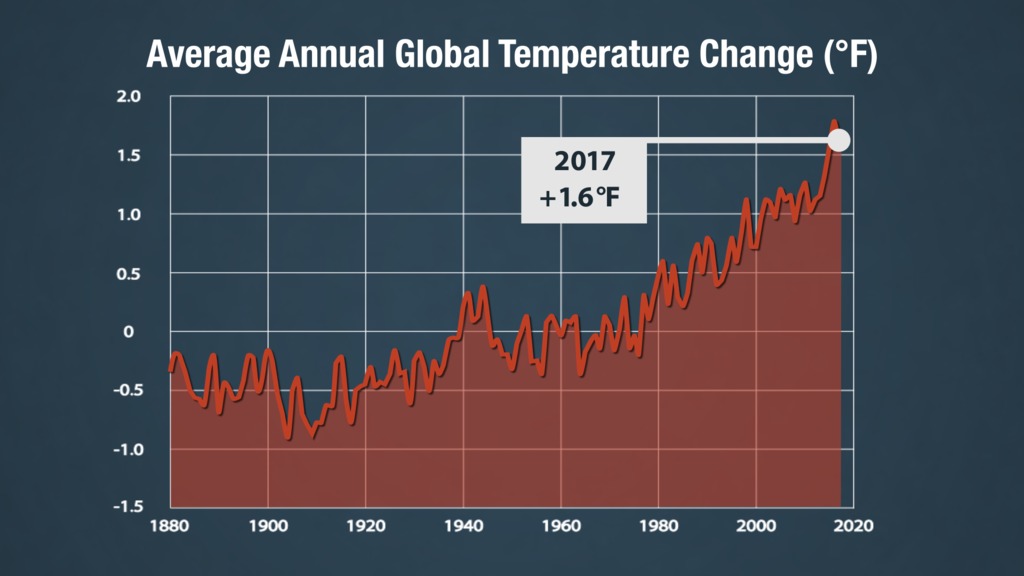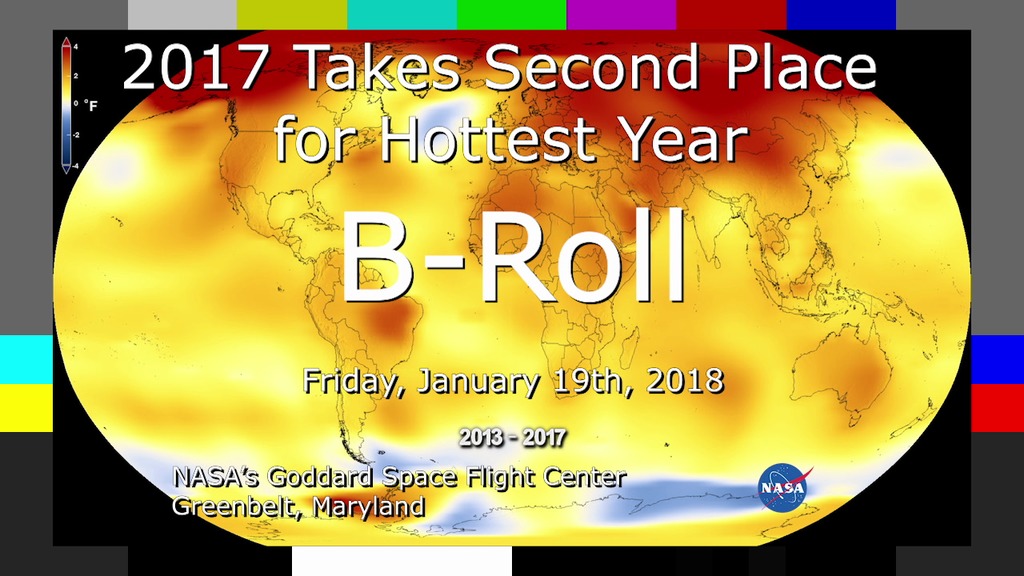2017 Takes Second Place for Hottest Year
Earth's surface temperatures in 2017 were the second warmest since since 1880, when global estimates first become feasible, NASA scientists found.
Global temperatures in 2017 were second only to 2016, which still holds the record for the hottest year. However, 2017 was the warmest year without an El Niño.
In a separate, independent analysis, NOAA scientists found that 2017 was the third-warmest year in their record. The minor difference is due to different methods to analyze global temperatures used by the two agencies, although over the long-term the records remain in strong agreement.
Read the release.
Complete transcript available.
Music: Sojourner Rover by Craig Warnock [PRS], Lee Ahmad Baker [PRS], Sean Hennessey [PRS]

This map shows Earth’s average global temperature from 2013 to 2017, as compared to a baseline average from 1951 to 1980, according to an analysis by NASA’s Goddard Institute for Space Studies. Yellows, oranges and reds show regions warmer than the baseline.

Gif of Temperature Visualization

Gif of 2017 Temperature Data Wrapped to a Globe

Gif of the U.S. Temperature during December 2017
Credits
Please give credit for this item to:
NASA's Goddard Space Flight Center
-
Producer
- Kathryn Mersmann (USRA)
-
Writer
- Kate Ramsayer (Telophase)
-
Scientist
- Gavin A. Schmidt (NASA/GSFC GISS)
Release date
This page was originally published on Thursday, January 18, 2018.
This page was last updated on Wednesday, May 3, 2023 at 1:47 PM EDT.


